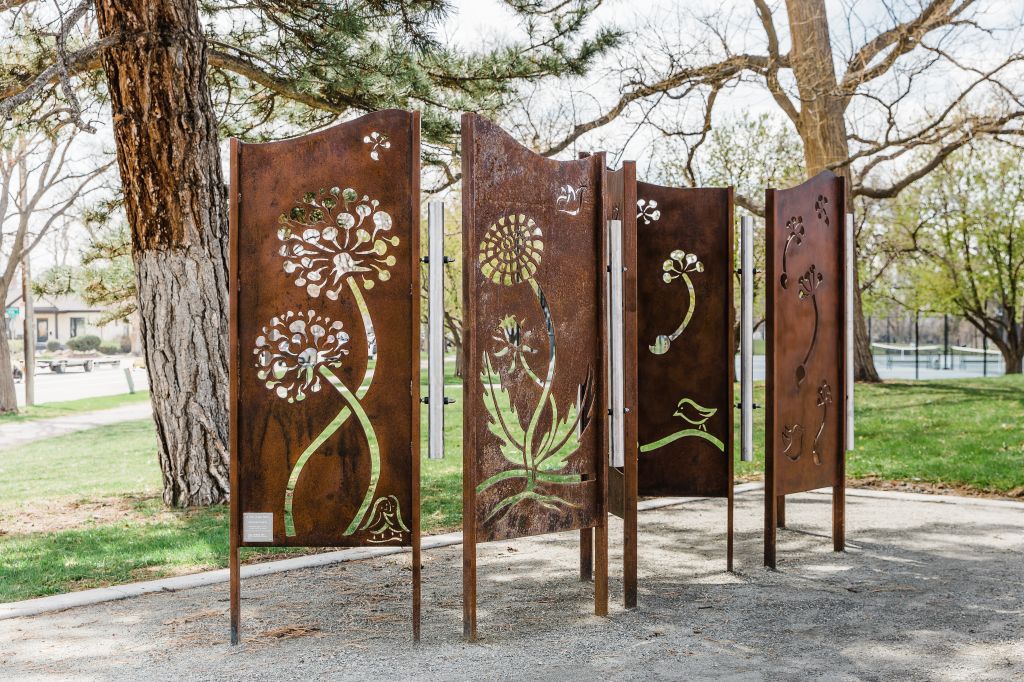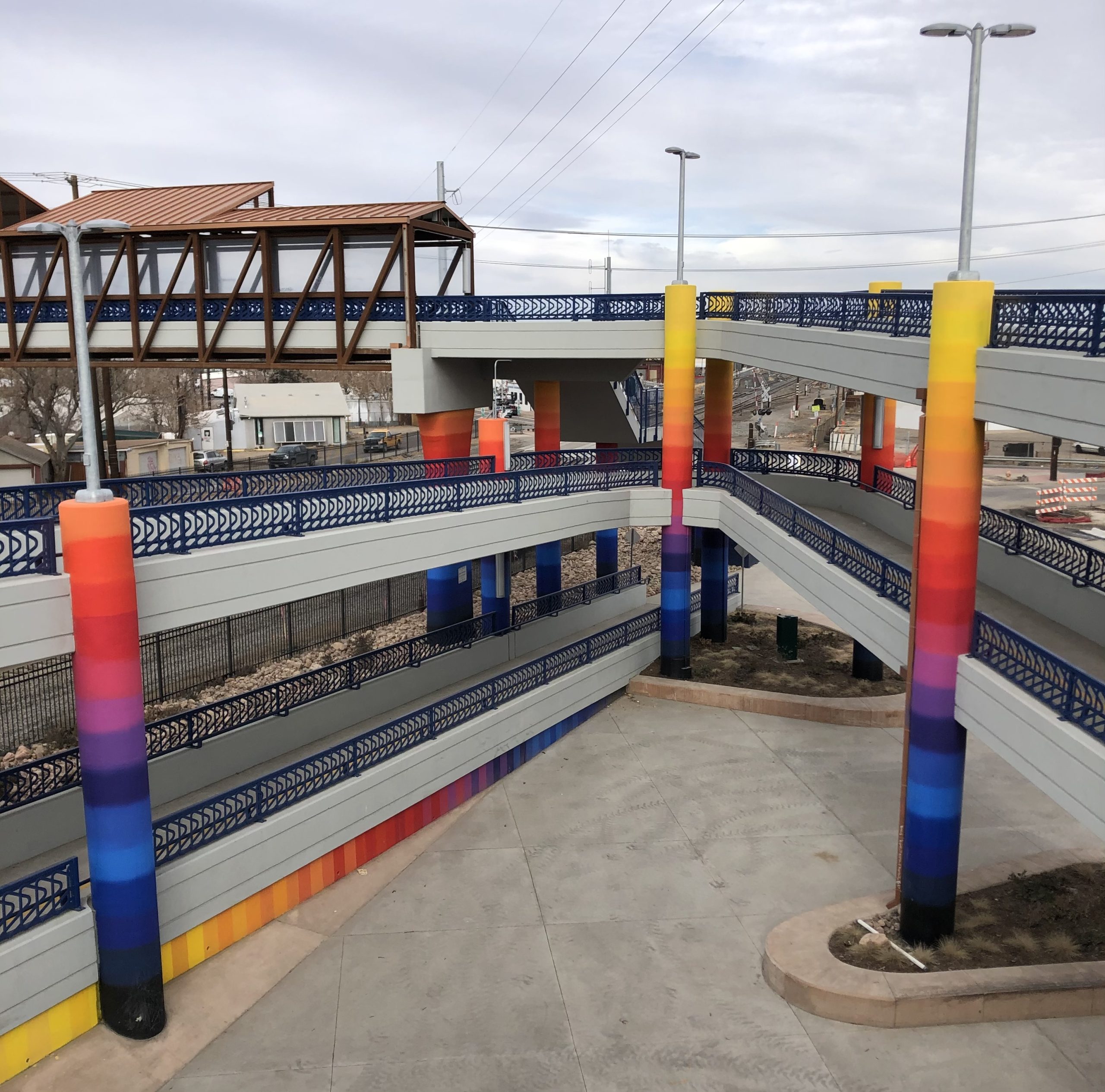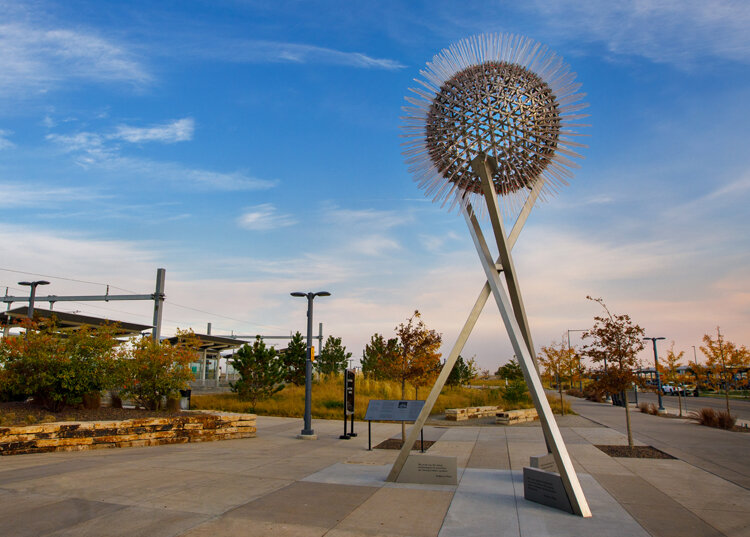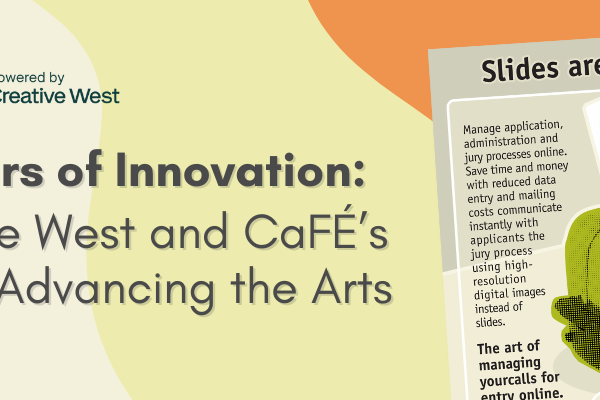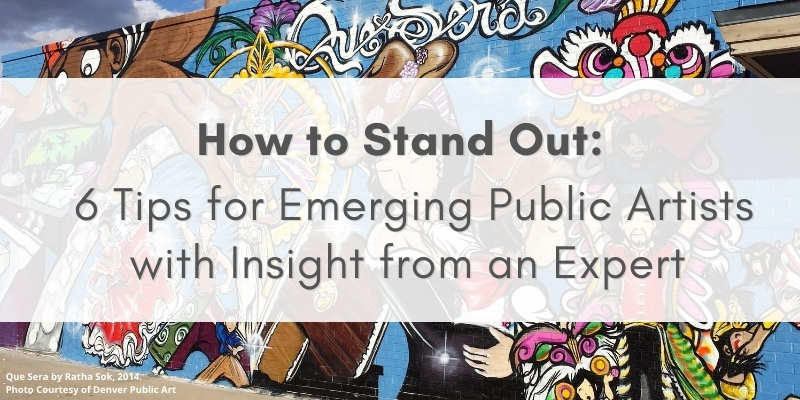
If you’ve ever applied to a public art call for entry, you know it’s not always easy. The process involves more than sending in photographs of your artwork and hoping for the best. Instead, a lot of work and preparation is required to show why you’re the best artist for the project in that particular community. To help emerging public artists navigate the process of applying to a public art call, we went straight to the field to understand exactly what art selection panels typically look for. We were fortunate enough to speak with Brendan Picker, public art program administrator at Denver Arts & Venues, about what artists can do to stand out.
About Denver Public Art
The Denver Public Art Program in Denver, Colorado, directs 1% of every municipal capital improvement project over $1 million to the creation of public art. Since 1988, over 400 public artworks have been added to the collection. Every year, there are several open calls to artists—most listed right here on CaFÉ—for various projects throughout the city. The panels tasked with selecting the artists are comprised of both community members who live or work near the project site and members who are more widely experienced and knowledgeable about art.
Above: A Life Cycle Story by Maureen Hearty. Created in 2021 for the Smiley Library in the Berkeley neighborhood of Denver. Photo courtesy of Denver Public Art.
Combined with Picker’s expertise and advice, we compiled some tips for artists about what the art selection panel looks for, common mistakes to avoid, and how to stand out as an emerging public art artist.
1. Know what to look for to determine if the opportunity is right for you.
It seems obvious, but the first thing anyone should do before applying to a public art opportunity is review the eligibility criteria. “Why spend time applying if you are not eligible?” Picker says. Look for geographic requirements first—is the call open locally, nationally, or internationally? Picker says the next step is to carefully read the call for specific themes and media that the art selection panel is looking for. “If they are looking for 3-dimensional work and you are an oil painter, it might not be a good fit.”
Finally, go beyond the base-level entry requirements to find out whether you should put in the effort to apply to the call. Picker suggests looking for something about the project site that calls out to you—perhaps a specific connection to the neighborhood or community. “Really ask yourself why this particular project is interesting to you. If you have to force yourself to find a connection, it might be hard for the panel to see why you might be suitable for the project,” he says.
2. Use images that show off your best work.
When determining what images you should use on your application, consider what the art selection panel will be looking for. Picker simply states, “The art selection panel is always going to be attracted to great photos of artwork.” This means framing the work in the photo, so they know what they are looking at, making sure it’s in focus with good lighting, and that the colors reflect the actual art. When asked if artists should tailor their images to what would fit the specific project or instead show off their range, Picker suggests that if the call asks for specific materials—like wood or mosaic tile—use images of past work that fits. If the call is more broad and open to lots of materials or approaches, feel free to showcase your range. He adds, “You want to put your best foot forward, so using images that really show off your best work is important.”
Above: Bridging the Community by Anthony Garcia, Sr. Created in 2020 for the 47th & York Bicycle & Pedestrian Bridge in the Globeville neighborhood of Denver. Photo courtesy of Denver Public Art.
Bonus tip: Picker shared with us that it is not considered best practice to shove multiple photos of your artworks into one image. “It may seem like a good idea to get more of your work in front of the panel, and it probably won’t disqualify you,” he says, “but it tends to backfire as the panel is confused as to what they’re looking at and it may look like you’re cheating the system.
3. Connect to the public art site and the surrounding communities in your artist statement.
Almost every open public art call will ask for an artist statement, letter of intent, and other supplemental material to the images of the artwork itself. When asked how important these materials are in the art selection panel’s decision making process, Picker said the artist statement or letter of intent is essential. “Make sure you spend time connecting your work or artistic philosophy back to the site/location for the art and the surrounding communities in your statement,” he says. While the panel may not read every artist statement in full during the first round of scoring, he says they are very important in later stages as the panel digs deeper into the applications as a group and identifies the top contenders. Picker also mentions that if your artist statement feels like boilerplate text or like it was written for another project, chances are you will be eliminated.
Above: Time is a Friend of the Future, Not an Enemy of the Past by Valerie Savarie. Created in 2021 for the Byers Branch Library in the Lincoln Park neighborhood of Denver. Photo courtesy of Denver Public Art.
4. Avoid making common mistakes that would eliminate you from consideration.
No matter how perfect you or your work might be for the project, a mistake on your application could cost you the opportunity. Be sure to review your application and avoid common mistakes that could eliminate you and your work from consideration. Picker says the most common mistake is applying for a call when you are not eligible to apply. Another common mistake is is applying to a call that is seeking artwork in a different material than what you apply with—“if we are looking for paintings or other 2-dimensional work and you apply with images of your amazing steel sculptures, you’ll likely get eliminated.” Picker also shares that another common mistake is applying as a project manager or fabricator with images from several different artists. Even if you may have helped realize a project, “the panel really wants to see artists apply and showcase their own work for consideration.” Other mistakes include not uploading your artist statement or letter of intent or not adhering to the call’s image requirements.
5. Demonstrate your willingness to collaborate.
Often the art selection panel is looking out for more than just high quality artwork or demonstration of high artistic talent. In fact, Picker says, “We are always looking for creative energy and artistic promise. Connections to the call in terms of themes, media or the site and community are very important.” In addition to showcasing the end result of previous public art projects, don’t be afraid to illustrate your understanding of the site where the work will be placed, deep knowledge of your preferred materials, and your willingness to be flexible. “Public art is not a solo game,” Picker says. “You will be interacting with many different folks with a stake in the project, so being able to tell us how you are a collaborator is important.”
6. Show your worth even if you lack experience.
Don’t shy away from a public art opportunity if you don’t yet have any experience. For emerging artists looking to break into the public art scene, Picker recommends including in your letter of intent how you have connections to the site or community and that you have great ideas even if you don’t have experience or past work to show. “Demonstrating that you can work with a fabricator to realize your ideas and that you understand budgets and deadlines can help you stand out to the panel.”
Picker shares that the Denver Public Art Program always encourages emerging artists to apply and is eager to help gallery artists make the leap to public art. “We’ve had some pretty amazing success stories over the years where artists who maybe just did murals in the past are now working on stunning 3-dimensional works with the help of fabricators and our team. The panel took a chance on an artist and the artist blew them away in the proposal presentation portion of the selection process. It’s a great part of the public art story,” he says.
Right: Luminous Wind by Haddad | Drugan. Created in 2020 for the 61st and Peña Station in Denver. Photo courtesy of Denver Public Art.
There are also other ways to get involved in the public art scene of your community. In fact, the Denver Public Art Program is seeking interested community members, artists, and arts professionals who live or work in Denver to serve on an art selection panel. To learn more about this opportunity or to apply, visit https://denverpublicart.org/for-artists/.
Written by Communications Coordinator Justine Chapel

